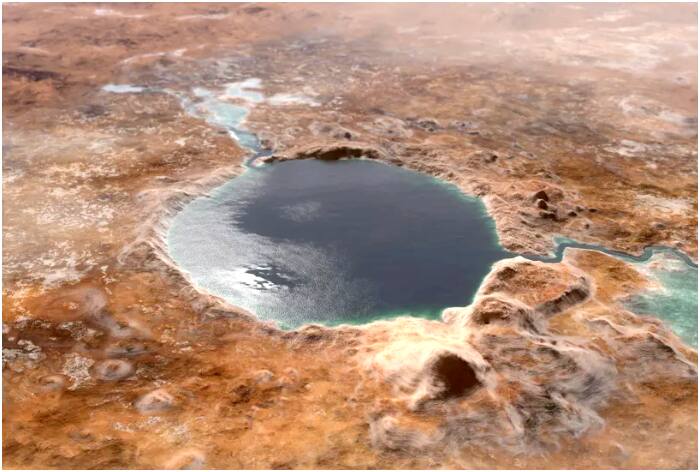[ad_1]
NASA’s Mars mission: The Perseverance rover has recently found evidence of ancient lake sediments at the bottom of Jezero Crater, offering new hope for finding traces of past life on the Red Planet.

NASA mission to Mars: The National Aeronautics and Space Administration’s (NASA) Perseverance rover has recently found evidence of ancient lake sediments at the base of Mars’ Jezero Crater. This new discovery has offered new hope for finding traces of life in samples from the Red Planet. The rover has been scouring the crater to find signs of past life on the planet and also collecting samples for a possible future return to Earth. According to the statement, researchers from the University of California, Los Angeles (UCLA) and the University of Oslo revealed new insights into the formation of sediment layers over time at the bottom of the crater. Scientists and researchers studied data collected using the rover’s Radar Imager for Mars’ Subsurface Experiment (RIMFAX) instrument.
“From orbit we can see many different deposits, but we cannot say for sure if what we are seeing is their original state or if we are seeing the conclusion of a long geological history. To know how these things formed, we need to look beneath the surface,” Space.Com quoted David Paige, first author of the study, RIMFAX deputy principal investigator and UCLA professor, as saying.
NASA Mission to Mars: Perseverance Rover
The rover landed on the Red Planet in February 2021 inside the 45-kilometer Jezero crater, which is believed to have once housed a large lake and river delta. Since then, the rover has been scouring the crater for signs of past life and collecting samples.
NASA mission to Mars: how the RIMFAX instrument works
As the rover travels over the surface of Mars, the RIMFAX instrument sends radar waves downward at 10-centimeter intervals and measures reflected pulses from depths of about 20 meters below the surface. This is done to create a subsurface profile of the crater floor.
NASA’s mission to Mars: the possibility
Recent RIMFAX data showed evidence of sediments deposited by the water that once filled Jezero Crater. These findings have opened up the possibility of microbial life on Jezero. If microbial life existed on the Red Planet, sediment samples from the crater would contain signs of their remains.
Two separate periods of deposition occurred, creating layers of sediment on the floor of Jezero Crater that appear regular and horizontal. The statement mentions that variations in the lake’s water levels caused some of the sediment deposits that led to the creation of a massive delta,
which the rover explored between May and December 2022.
Radar measurements also detect an irregular crater floor beneath the delta, which scientists say is due to erosion before the sediments were deposited. As the lake dried, layers of sediment eroded, forming the geological features visible today on the surface.
“The changes we see preserved in the rock record are driven by large-scale changes in the Martian environment.” “It’s great that we can see so much evidence of change in such a small geographic area, allowing us to extend our findings to the scale of the entire crater,” Space.com quoted Paige as saying.
Note: The findings were published January 26 in the journal Science Advances.

